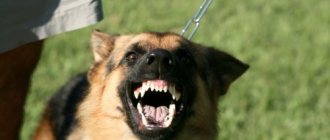The Toy Terrier is a dog that is ideal for keeping both in an apartment and in a private house, both in the city and outside the city.
The dog is friendly, sociable, and easy to get along with. This is a wonderful friend and a cute pet.
But this breed also has disadvantages - fragility, miniature size and weak immunity.
This is what makes him so vulnerable.
Toy often gets injured and cannot tolerate cold and dampness.
At what age should training begin?
Usually, training a toy terrier puppy at home begins at one month of age, but if the baby arrived in the house later, training can begin at 2 or 3 months .
Start learning with the basic rules that are accepted in your family. The dog must know its place, be accustomed to the litter tray, recognize the authority of the owner, etc.
After six months, you should take training more seriously and start teaching your baby commands . At this point, he must be sufficiently well-mannered and obedient.
What should a dog be able to do?
Minimum required:
- The puppy must know its place. To do this, under no circumstances should you take him to the bed.
- A well-mannered pet always knows a place to relieve itself.
- The dog should not chew things on shoes.
- Know basic commands and execute them.
- Respect the authority of the owner.
- A toy terrier must know his name and respond to it.
- A well-mannered dog treats people calmly, does not bark, does not bite, or behaves aggressively.
- A properly trained toy is comfortable with a leash and collar.
Raising a Toy Terrier is different from raising a large service dog . There is no question of physical punishment or raising one's voice here. Otherwise, the dog may get scared or even run away.
What kind of breed
Before you start a conversation about training Toy Terriers, you need to find out what kind of breed it is and what its characteristics are.
These dogs barely reach 30 cm in height. They weigh no more than 3 kilograms, and their whole appearance evokes affection. But wait, smile and extend your hand to the animal. Toy terriers have sharp teeth, like many needles. These, at first glance, funny dogs will definitely use them. As soon as they see someone's fingers in front of their nose.
They are very distrustful of strangers. They don't like dogs any less than they like strangers. If a toy terrier saw another dog in front of him, there would be trouble. He will definitely try to sort things out. And it’s good if someone else’s dog is on a leash or has a calm disposition. Otherwise, a visit to the veterinarian cannot be avoided.
Despite its combative nature, the toy terrier is a sweet and very sociable creature at home. Gets along with all family members. Very good for people who love active recreation. But it is better not to take toy terriers into a family with children, especially if the child does not yet understand how to treat dogs. The terrier will not tolerate pulling his tail or examining his own muzzle. Will bite the offender.
Where to start education?
You should start raising a toy terrier by teaching the basic rules, namely:
- Accustoming to cleanliness. The dog must strictly know the place where it should go to the toilet. This could be a litter tray or a diaper.
- Be sure to show the dog his place, this could be a pillow in a cozy place, an old mattress or a special house. Under no circumstances should your dog sleep with you.
- Stop any attempt at aggressive behavior. If the dog tries to bite, let him know who is in charge.
- Teach your baby to hygiene procedures - trimming nails, combing and cutting. The latter is especially important for long-haired toys.
- A Toy puppy should tolerate loneliness calmly. Get him used to this gradually. Leave the lady alone for 15-20 minutes. Then increase the time.
- A little later, accustom your dog to a leash.
Expert opinion
Kozhevin Semyon Kirillovich
Expert dog handler.
The toy terrier is a choleric dog, sometimes it is characterized by aggression and violent expression of feelings, it develops reflex connections very quickly and also quickly fades away. Once you have achieved excellent command performance, do not give up on your studies. This requires a special approach. Regularity, consistency, loyalty - these are the keys to good upbringing.
How to care
Toy terriers are dogs that require training and care at home. And if the owner has to suffer with the first one, then with the second one everything is simple. Toy is easy to care for; it is enough to comb your pet once a week. As for bathing, it is better not to wash your baby unnecessarily. Two or three times a year will be quite enough, provided that the wool is not heavily soiled.
But paws need to be washed after every walk. But it won't be difficult at all. Toy is so small that you can wipe his paws with special wet wipes for dog hygiene.
As for feeding, adult toy terriers are fed twice a day. If the owner prefers to give his pet dry food, then he must follow the dosage indicated on the package. When feeding natural food, it is important not to give more than expected. For one meal, 200 grams of food is enough for your pet.
How to teach behavior on the street?
Even if your pet is no longer a puppy, it is quite possible and even necessary to accustom him to the street.
Observe your toy on the street: is he afraid, how does he treat people and other animals, how does he react to noise, etc..
If the dog is afraid, try to convince him that the street is safe and he is not in danger. Talk to him, stay close to him all the time.
At first, walk with him only when he is in a good mood, when he is cheerful and inclined to play.
If the dog panics, calm it down and go home.
How to stop barking and biting?
First of all, you should find out the reasons for this behavior.
There are only two of them:
- Playfulness.
- Dominance.
In the first case, the dog does not bite on purpose, during play.
Just stop playing if the baby is too carried away and strictly say “no” . It would be enough.
If the reason is dominance, this means that the dog considers himself in charge. Be firm, behave confidently, apply sanctions and do not allow your pet unnecessary things.
As punishment, you can deprive your pet of games, treats, or ignore.
How to teach basic commands?
Basic commands include those that are based on the basic instincts of the animal and are the easiest to learn.:
- "Ugh" . command, control is recommended to be taught first. It is given when a pet does something inappropriate. During the training process, make it clear what the dog should not do.
- "Place" . Also the bottom of the most important teams. Show your baby the place where he should sleep, while clearly pronouncing the “Place” command. Remember - the command must be pronounced in a firm and firm voice. If your dog complies, reward him with a treat.
- "To me" . This command trains the pet to approach the owner upon request. Start learning at home. To do this, say the dog’s name loudly and command “Come to me.” If the dog obeys, give him a treat.
- . " This command is not particularly important, but it is still worth teaching your pet to it.
Toy Terrier training by month
1-3 months
At this age, the puppy is taught basic rules of behavior, this:
- Sleep peacefully at night, don’t whine and don’t ask to go to bed with your owner. Here you will have to show firmness and willpower.
- Toilet training. This could be a tray or a cloth. To make it easier for your dog to get used to it, place the tray where she most often relieves herself. Show your baby that he needs to “do his business” in the tray. When your pet gets used to it, gradually move the tray towards the place where he will stand
- Accustoming the puppy to its place. To do this, first introduce the dog to his “bed”. Firmly say “Place” and take the puppy there. Do this several times. Then stand near the dog’s place, say its name and command “Place”; if the baby obeys, give it a treat.
- Teach your puppy not to jump on furniture or damage things.
4 to 6 months
At this age, they begin to accustom the toy to unfamiliar places, as well as to a leash and collar. At first, do this at home. Put a collar on your puppy and let him walk around the house in it.
Repeat this action for several days, this will allow the puppy to get used to it . Now you can attach the leash and show the dog what it is for.
6-8 months
Now it's time to learn the basic commands.
These are commands such as: “Fu”, “You can’t”, “Place”, “Walk”, etc..
Of course, the baby will have to learn some of them much earlier. At this age, the owner should pay maximum attention to training the dog.
Commands must be executed clearly and quickly . If you have any difficulties, contact a professional dog handler. A specialist will help teach the toy terrier commands and also give the necessary recommendations.
It is worth considering that at this age the dog begins puberty - girls experience their first heat, and male dogs begin to react to females in heat. This greatly affects the pet’s behavior, the dog becomes less obedient. The solution to this problem, if breeding work is not planned in the future, can be sterilization.
9 months
During this period, command training continues and the range expands. At this age, the dog must clearly respond to those commands that have already been learned .
If this does not happen, then the training was not of sufficient quality. Persevere in your studies and be consistent.
What else should a dog be able to do at this age?:
- Do not jump on you, passers-by or other pets.
- Know how to behave in elevators and public transport.
- Don't bark for no reason.
- Be calm about the leash and collar.
- Calmly withstand procedures in grooming salons.
10-12 months
At this age, the toy terrier already knows commands and diligently follows them. Now is the time to teach him off-leash walks and appropriate commands.
These are “Near”, “Sit”, “Stand”, “To me” . Walk your dog in quiet, calm places away from the roadway.
Parks, squares, suburban areas are the best option for such a plot.
Basic commands that are easy to teach your dog.
We will focus on basic commands, the implementation of which develops strength and intelligence in pets. Teaching these commands to a dog will not be difficult, since their implementation is based on the basic behavioral factors of the animal.
The "sit" command.
This is the simplest command for a pet. Therefore, teaching a dog the “Sit” command is not particularly difficult. First of all, because you can teach a puppy this particular command from the age of one and a half months.
So, approaching the dog, attract (if necessary) his attention by calling him by name. Give the command “Sit” and press your hand on his butt (sacrum). At the same time, move your other hand with a clamped treat over his head. As soon as the toy sits down, give him a treat and after a couple of seconds release him, commanding him to “Walk.” Repeat this exercise two to three times at five-minute intervals.
As soon as your pet is confident in following the “Sit” command while waiting for a treat, begin to increase the interval between the command and the reward to 5 seconds. You need this time to replace the voice command with a gesture (the right hand is raised to ear level with the palm facing forward).
Practice the “Sit” command not only on the street, but also at home. Be sure to give this command before feeding.
"Come to me" command.
This is the basic setting that will allow you to be calm about your pet.
Train this command in a quiet place and at first with an assistant. A person who agrees to help train a toy must hold a toy puppy in his arms. You treat your baby with a treat from your hands. Next, the assistant with the puppy in his arms moves away a couple of meters and places the toy on the ground, holding him with his hand.
Incorrect behavior of the animal is corrected by setting “Fu” or “No”. Which of these teams you choose is up to you.
Start using a difficult prohibition setting from 5-6 months of age. When walking your puppy on a leash, stop your pet from trying to go towards any scraps lying on the ground. To do this, jerk the leash sharply, taking into account the difference in weight between the dog and you. Continue moving. After a few meters, stop and give your dog another command, such as “Sit.” If successful, give him a treat.
Remember that the dog is not rewarded for correctly executing the “Fu” command.
Team "Voice".
For many owners, it is not clear how to teach a dog the “Voice” command. After all, it often happens that there is too much loud barking.
To train your dog to vocalize on command, use the imitation method. Place the dog that owns this command or one of your family members next to your pet. Command - “Voice”. The dog or your helper must vocalize and receive a treat from you. At the same time, your partner should observe the picture of the “rival” eating the treat. Outraged by what he sees, the toy will quickly master this command.
Purchasing an adult dog raises doubts among people about its upbringing and training. For an adult dog to learn information, it will take much longer than a puppy. And this is the only difference in raising and training an adult dog. The consolidation of conditioned reflexes stumbles due to the dog’s reluctance to learn. And your patience and regularity of training leads to the fact that your pet will one day become the most well-mannered dog in the area.
Start the educational and training process of an adult animal by establishing contact between you. The faster the dog sees you as a leader, the faster you will get the desired result.
We suggest you read: Proper cat care after surgery
Motivation in the form of treats, activities without external stimuli and your good mood are the basis for correctly adjusting the animal’s behavior.
And don’t forget that if you can’t cope with an adult dog, you can always turn to an instructor for help.
The patience and effort that you put into raising and training your beloved toy will definitely return a hundredfold in the form of the love of the most devoted creature on earth.
The main condition for raising a toy terrier is to establish contact and relationship between the owner and the animal. The dog’s perception and response depend on the behavior and adequacy of the dog owner’s actions.
Representatives of the Toy Terrier breed must be taught basic commands that are used almost every day: “Fu!”, “Place!”, “Sit!”, “Stand!”, “Come to me!”, “Near!” etc. We bring to your attention several simple training techniques:
- "To me!". In order for the dog to come, you need to say the command loudly and show the pet your favorite toy or tasty treat.
- "Sit!". After voicing the command, place your hand on the toy terrier's rump and lightly press it down.
- "Lie!". The technique is the same as when learning the “Sit!” command, but now you need to focus on the back.
- "Ugh!". The command is considered one of the most important in the process of training a pet. The owner's voice should be confident, stern and even. To enhance the effect, you can lightly spank your pet with a newspaper or spray water in his direction from a spray bottle.
How to train correctly?
It should be noted that training is a mutual necessity for both the dog and its owner.
How to properly train a toy terrier:
- If you are toilet training your dog, do it gently, tactfully and gradually. The second rule is to do this as early as possible, literally from the first day the baby arrives in your home. Let your pet develop a conditioned reflex - go to the right place - get a reward.
- When you accustom a toy to his place, be sure to be firm. At first, the puppy will whine and ask to go to your bed. This is when you will need willpower. If you make concessions, you will lose your authority.
- Strictly prohibit your puppy from damaging furniture, shoes and objects. Be consistent - scold him every time he tries to chew something. If you use sanitization only from time to time, the puppy will not learn the lesson, he simply will not understand what is required of him.
- Patiently accustom your dog to a leash and collar, this is necessary for his safety. Give your baby a chance to get used to the equipment. Don't insist or force.
- Learning the "Place" command. Show the puppy his place, take him there. Tell him kindly that this place evokes only positive emotions and pleasant sensations. Repeat this process only as many times as necessary.
- Team "Fu". If the puppy does a prohibited action, such as picking up scraps on the street, say loudly “Ugh” and gently remove the dog. The key point is your intonation. Let your pet know exactly what you don’t like.
- Command "Come to me" When your baby voluntarily runs towards you, say loudly “come” and give him a small piece of treat. Do this until the dog understands the connection between the treat, your words and your actions.
- Help your dog socialize. She must treat the people and animals around her calmly. This will be very useful when visiting the veterinarian, when visiting grooming salons, as well as during mating and childbirth. Expand your pet's horizons, visit shops, zoos, dog parks in the same place as him, take your baby with you on a visit, and go for a walk more often.
Terriers. All about terriers. Terrier lovers club.
Despite its miniature size, the toy terrier remains a dog. An adult dog should not bark for no reason or cower from fear. He is very smart, with a strong character, so his upbringing must be approached with the utmost seriousness.
There are several basic rules for raising a puppy:
- Accustoming to place. Every dog should have its place. Toys love it when they are cages or houses, which are a closed space where they can sleep peacefully or hide a toy. Until the teeth are replaced, you should not choose bedding with padding, as it can tear the outer tissue and eat the padding, which in the worst case will clog the intestines and lead to death.
- Cleanliness. Toy puppies very quickly learn to relieve themselves in one place. To do this, after eating and sleeping, they are taken to one place until they go to the toilet. People blame for mistakes only when it is clear that it was done out of spite. Even if the dog has been litter trained, you should not deprive him of the joy of walking, where his character and sociality will be formed. They are also needed for proper physical development.
Basics of raising a toy terrier puppy
— No sofas or beds. The very fragile bones of the toy, especially during teeth change and calcium deficiency, are easily damaged. The puppy is not afraid of heights, but even jumping from the bed can be fatal for this little one. Until the dog grows up, it is better not to take him on the sofa. Curiosity will cause the dog to try to climb and jump off the piece of furniture. — We remove the wires. While exploring the world, the puppy will try everything. It should not be left in the same room with wires lying on the floor. If you need to leave your dog alone at home, it is best to lock it in your cage house.
- Team "Fu". A puppy is able to understand a prohibiting command at the age of 6 to 9 weeks. Don't waste time learning. To prevent him from getting on his neck, he needs to prohibit everything that annoys you and that is unsafe. First they teach at home, and then consolidate the results on the street. They always reward even for trying to follow a command.
- Command “Come to me!” If you call the baby, she should always come. Her safety on the street most often depends on this, so you need to treat this issue with special responsibility.
In general, the Toy Terrier is very smart and quickly learns all commands and requirements. There are slight differences between the characters of males and females, which also need to be taken into account when raising them. For example, girls usually choose one owner, while boys are more active and playful.
We invite you to watch a video about the Basics of raising a toy terrier...
Basic rules of training
When training your Toy Terrier, strictly follow the following rules::
- Under no circumstances should you yell at the dog, call it names, or raise your voice.
- In the first six months of a puppy’s life, training should be loyal and gentle.
- Firmly stop any aggression.
- Patiently show the dog what is required of it, and be consistent when teaching commands.
- Be sure to reward your dog with treats.
- As a punishment, it is best to choose deprivation of your attention and lack of games.
- Do not hit the dog under any circumstances!
Training a toy terrier
Although training a toy terrier is mandatory, it has completely different goals and approach.
Already based on the size of the dog, it should be extremely clear that applying methods that are relevant for shepherd dogs and other breeds to toy dogs is a huge mistake. Dog training should focus on teaching your Toy Terrier commands that will be useful every day. Naturally, for such energetic miscreants as Toi, the primary and most important commands will be “fu” and “sit.” You'll have to work hard before your dog actually listens to your commands. If you are careless about this process and miss the moment, it is unlikely that you will be able to make up for it in the future. Raising a Toy Terrier
This breed and its upbringing require enormous patience and compliance with special conditions that are not always applicable to other dogs. Basic principles that will help make your Toy Terrier a trained and obedient dog:
- Never yell at a dog or try to “build it up”
- Up to six months only loyal education
- Don't be aggressive even when your Toy Terrier bites
- Be patient and don’t give up training, even if it doesn’t work out at first.
As a rule, training a toy terrier at home is the best option. But then you need to adhere to some recommendations. Remember that this is absolutely not a breed that needs to be broken into complete submission. Training a toy terrier is more like the process of finding a common language between dog and owner.
If you decide to use the “carrot and stick” method, then a reward for any execution of the command should be mandatory! In turn, the understanding of the “whip” is to persistently repeat the command, letting the dog know that you will not leave him alone. This breed has a choleric temperament, so this should be taken into account when raising. Don't think that you're the only one who got an obnoxious and aggressive puppy. Most dogs of this breed behave almost the same and this can be considered their feature.
How to stop a toy terrier from biting
A common problem is that a toy terrier bites its owner or other people. This cannot be regarded as a manifestation of aggression, but must be stopped immediately. If your toy terrier bites, there is no need to hit him. Even a rolled up newspaper or slippers is a bad option. You must understand your dog and then he will answer you in the same way. Therefore, use the following methods:
- When a dog bites you, try screaming loudly, saying something like the word “ouch.” Don't shout too loudly, as your goal is not to scare the dog, but to let him know that you are in pain. If you do everything right, you will see progress very quickly.
- Another method also works well. During play, if the puppy bites you again, just stop playing with him or leave the room altogether. This will surprise the puppy and let him know that he is doing something wrong.
- Dogs do not always understand words, but they sense the tone unmistakably. Sometimes it is enough to make it clear with your voice that you are unhappy with his behavior to stop the pranks.
It is especially difficult to wean a puppy from going about its business in the house. If your toy terrier pees in the apartment, then try to train him to use the litter box by giving a reward for each successful attempt to pee in it. The use of antigadin and other means is not always relevant, but still, it can help.
Basic command training
There are no special recommendations for teaching basic commands that would be mandatory for the breed. Use standard training methods, but taking into account the specific nature of this breed. The main task in raising a toy is to create a relationship between the dog and the owner.
For the rest, it’s worth starting with the basic commands - ugh, lie down, sit, place, nearby. If you can master them successfully, you can study more complex ones. This will be great training for both dog and owner. Children do this with particular pleasure. It is enough to explain to them the basic principles and allow them to develop independently.










